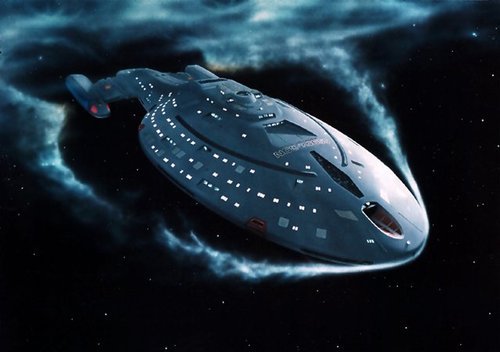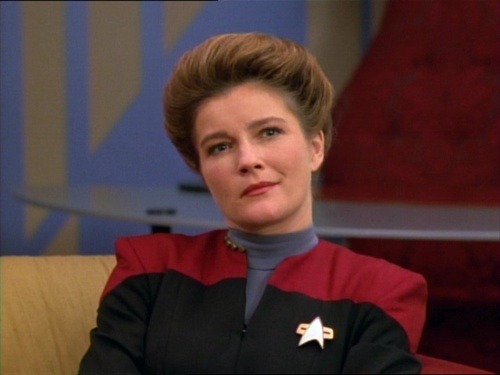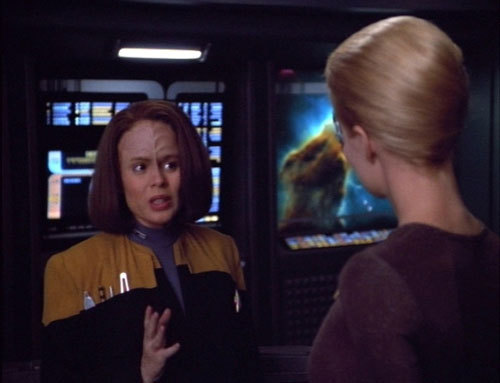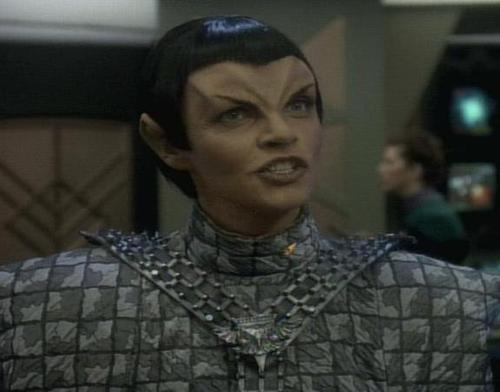From the outset, Gene Roddenberry’s vision of the future was a very progressive one. I know there was problematic things that Roddenberry did, but he also paved the way for a television series that broke boundaries.

From the fact that the Enterprise crew was a diverse collection of individuals, to the fact that a black woman was featured as a standard bridge officer, right up to television’s first inter-racial kiss, Star Trek’s early days pushed the envelope and didn’t budge when the envelope attempted to push back.
Even though executives attempted to get Nichelle Nichols fired and off the show, making her working life difficult, to the talk she had with Martin Luther King Jr. about black representation on television. At the time, George Takei wasn’t out as a homosexual, but he is not only recognized as being the dependable helm officer of the Enterprise, but also a bold and positive representative of the LGBT+ community.
The only way that Star Trek at the time could be stopped was through it’s cancellation. After less than 100 episodes, Star Trek came to a close, and many thought that was it.
Until the late 70s.
The original motion picture wasn’t anything to write home about, and in all honesty it was the start of a curse that Star Trek motion pictures began to undertake. The odd number horrible curse (with the exception of II, III, and IV, that all created a seamless narrative). But even with the successes of the motion picture universe, there were very few who thought that the Enterprise would fly through space on the small screen once more.
Until 1987.
With the original air date of September 26, 1987, a new Enterprise with a new crew began to take to the final frontier. They did take some getting used to. Trekkies (or Trekkers) had grown used to Kirk as the captain, and weren’t exactly sure how to view this older captain with a British accent and a French name.

But the Next Generation picked up in attempting to produce progressive and envelope pushing episodes where the original series had left off. From creating a race of beings who were androgynous to showing a good representation of the effects of torture.

That continued when Star Trek Deep Space Nine aired. Though not a captain at first, Benjamin Sisko was the first black commander of a space station, and eventually the first black captain of a starship in the television series (it must be pointed out, that does not include those characters who had bit parts and cameos). Avery Brooks took the role of Sisko and ran with it.

Deep Space Nine was also a series which put a lot of emphasis on women, and even women of colour. From Keiko O’Brien to Cassidy Yates, from Major Keira to Lt. Dax. Deep Space Nine was a very character driven series that explored the lives of the crew of DS9 and the Defiant, whether that be through the good times or the bad times. And it showed that while these were good people, they have made some questionable choices and decisions throughout their lives.

Deep Space Nine even explored, but did not fully invite, the lives of LGBT+ onto the screen, with the airing of Rejoined (Season 4, Episode 6), where Dax is reuinted with a past lover from a previous host.

By this time, The Next Generation had moved into the realm of motion pictures, and while DS9 was slowly coming to an end, the creators took another bold move. They began a fourth series, but instead of a ship with the safety of the Alpha Quadrant and the Federation close at hand, a ship thrown to the other side of the galaxy and left to defend herself.

But this ship, Voyager, would have a marked difference from the past Enterprises and Defiant. This ship would be the first in network television to be in command by a female Captain.

Captain Kathryn Janeway may have fit the motherly role, trying to get her crew to work with a Maquis crew as they attempted to get back home, but she also made hard decisions. Janeway and the crew of Voyager have run into the Borg more times than Picard and the Enterprise. They’ve discovered more new species and made more first contact scenarios than any other since the first Starfleet vessels began exploring. It might be said that Voyager might only be second to the NX-Enterprise for number of first contact missions.

As with the predecessors, Voyager had an equal mix of male and female officers (though, it did still tip toward the male side). B’Lanna Torres was the first female chief engineer (Scotty, La Forge, and O’Brien being previously seen on past series). Seven was an expert in not just the Borg but astrometrics, science and engineering. Kess was a compitent nurse, though left when her psychic abilities began to threaten the ship (though she did return in later seasons). Even the difference of “good guy” and “bad guy” had the roles filled with both men and women, as Seska became a thorn in Voyager’s side.

NOTE: Seska began the early seasons wearing a blue uniform for science, later episodes until she was revealed to be a Cardassian spy, she wore gold of engineering. Also, actress Martha Hackett appeared in DS9 as the Romulan officer in charge of the Defiant’s cloaking device. Lost opportunities as I thought that would have been an interesting addition.

When Voyager ended it was a while before the last Star Trek series appeared on air. Instead of progressing forward in time, the idea was to look back at the history of Starfleet. The NX-01 Enterprise was launched with Jonathon Archer as her captain.

Even though the show was set in the 22nd Century, it still had a progressive feel to it, as it showed how the Enterprise and her crew dealt with each situation and became leaders to pave the way for a unified and peaceful Federation.
During the more than 28 seasons of Star Trek, there was just one regret voiced by those who had a hand in bringing it all to the big screen. That was there was no permanent LGBT+ representation on board any of the vessels.
Now, we’ve had two new motion pictures in the reboots. While they were good and entertaining, they left a lot to be desired. There was no feeling of hope as the other series brought to the table. No feeling that the future was going to not only be okay, but better. More inclusive and more accepting. Lens flairs and over using tropes from the original series (which was only a very, very minor part of Shatner and Nimoy’s Star Trek).
While the adventure has been great in the reboot, is Star Trek taking a step back from what it was?














